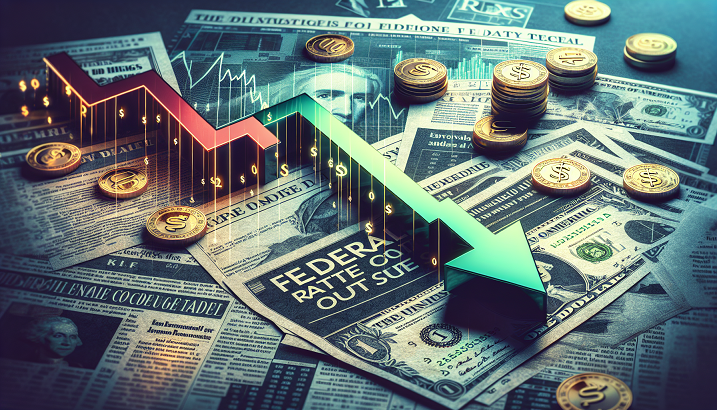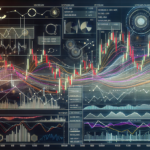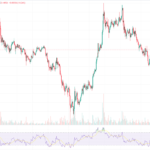Amidst the swirling currents of economic forecasts and market fluctuations, one entity holds the power to sway the tides of financial stability like no other—the Federal Reserve.
As whispers of a potential strategy shift echo through the halls of economic analysts and investors alike, the anticipation intensifies over the Fed’s rate cut decision. In a landscape riddled with uncertainties, the Federal Reserve’s steadfast commitment to its vision of three expected interest rate cuts this year stands as a beacon of stability, a rock in the tempest of inflationary pressures.
The recent uptick in inflation figures has cast a shadow of doubt over the Fed’s planned course of action, injecting a sense of urgency and speculation into the already volatile financial markets.
How will the Federal Reserve navigate this labyrinth of economic indicators, balancing the need for stimulus against the specter of rising inflation?
Join us on a journey through the intricate web of monetary policy, as we delve into the nuances of the Fed’s rate cut strategy and unravel the implications of their unwavering commitment to three expected rate cuts in the face of mounting inflationary challenges.
The Federal Reserve’s Rate Cut Strategy Unveiled
Amidst the swirling currents of economic forecasts and market fluctuations, one entity holds the power to sway the tides of financial stability like no other—the Federal Reserve. As whispers of a potential strategy shift echo through the halls of economic analysts and investors alike, the anticipation intensifies over the Fed’s rate cut decision. In a landscape riddled with uncertainties, the Federal Reserve’s steadfast commitment to its vision of three expected interest rate cuts this year stands as a beacon of stability, a rock in the tempest of inflationary pressures.
The recent uptick in inflation figures has cast a shadow of doubt over the Fed’s planned course of action, injecting a sense of urgency and speculation into the already volatile financial markets. How will the Federal Reserve navigate this labyrinth of economic indicators, balancing the need for stimulus against the specter of rising inflation? Join us on a journey through the intricate web of monetary policy, as we delve into the nuances of the Fed’s rate cut strategy and unravel the implications of their unwavering commitment to three expected rate cuts in the face of mounting inflationary challenges.
Economic Forecasts and Market Fluctuations: Setting the Stage
Before we dive into dissecting the Federal Reserve’s rate cut strategy, it is crucial to understand how economic forecasts and market fluctuations have set the stage for this pivotal moment. The global economy has been grappling with various headwinds, including trade tensions between major economies and geopolitical uncertainties.
These factors have led to increased volatility in financial markets, with investors seeking guidance from central banks like never before. The Federal Reserve has been closely monitoring these developments while formulating its monetary policy decisions.
The Anticipation Surrounding The Fed’s Decision
The anticipation surrounding each Federal Reserve decision is palpable, as the central bank’s actions have far-reaching implications for the global economy. With interest rates serving as a crucial tool in managing economic growth and inflation, any adjustment to these rates can send shockwaves through financial markets.
Investors and analysts closely analyze every word spoken by Federal Reserve officials, searching for clues about future policy moves. The anticipation surrounding the Fed’s decision on rate cuts has been particularly intense, given the current economic landscape.
Inflation on the Rise: A Cause for Concern?
One of the key factors influencing the Federal Reserve’s rate cut strategy is inflation. Inflation refers to the general increase in prices of goods and services over time. While moderate inflation is generally considered healthy for an economy, rapid or sustained increases can erode purchasing power and disrupt economic stability.
Recent data has shown a slight uptick in inflation figures, raising concerns among policymakers. The Federal Reserve must carefully consider this trend when deciding on interest rate cuts.
An Analysis of Recent Inflation Figures
To gain a deeper understanding of the recent inflation figures, it is essential to analyze various components that contribute to overall price levels. The Consumer Price Index (CPI) is one commonly used measure of inflation that tracks changes in prices across a basket of goods and services typically purchased by households.
According to recent CPI data, there has been a modest increase in prices across several sectors such as housing, transportation, and healthcare. However, it is important to note that these increases have not yet reached alarming levels.
Navigating Economic Uncertainties: The Fed’s Dilemma
The Federal Reserve faces a challenging dilemma when navigating economic uncertainties. On one hand, there are indications of slowing global growth and potential risks posed by trade tensions. On the other hand, there are concerns about rising inflation and the need to provide stimulus to support economic expansion.
These competing factors create a complex decision-making process for the Federal Reserve. The central bank must carefully weigh the potential benefits of rate cuts in stimulating economic growth against the risks of exacerbating inflationary pressures.
Stimulus vs. Inflation: The Balancing Act
The Federal Reserve’s rate cut strategy involves striking a delicate balance between providing stimulus to support economic growth and containing inflationary pressures. By lowering interest rates, the central bank aims to encourage borrowing and investment, which can spur economic activity.
However, excessive stimulus can lead to an overheated economy and higher inflation. The challenge lies in determining the appropriate level of stimulus that supports sustainable growth without fueling inflationary pressures.
Implications of the Fed’s Commitment to Three Expected Rate Cuts
The Federal Reserve’s commitment to three expected rate cuts despite the recent bump in inflation has significant implications for various stakeholders. For businesses and consumers, lower interest rates can translate into reduced borrowing costs, making it more affordable to invest or make large purchases.
Financial markets also closely monitor these rate cut decisions as they can impact asset prices and investor sentiment. Lower interest rates may lead investors to seek higher returns in riskier assets, potentially driving up stock prices but also increasing market volatility.
Market Reactions and Investor Sentiment
The market reactions following the Federal Reserve’s rate cut decisions are often swift and significant. Investors analyze not only the immediate impact on interest rates but also scrutinize policymakers’ statements for clues about future monetary policy moves.
Positive market reactions typically include increased investor confidence, rising stock prices, and potentially lower borrowing costs for businesses and consumers. However, unexpected or inconsistent decisions can lead to market volatility and uncertainty.
Conclusion: The Road Ahead for the Federal Reserve
As we navigate the complexities of economic forecasts, market fluctuations, and inflationary pressures, the Federal Reserve’s rate cut strategy remains a focal point of discussion. Despite the recent bump in inflation figures, the central bank maintains its commitment to three expected rate cuts this year.
The road ahead for the Federal Reserve is fraught with challenges and uncertainties. Balancing stimulus measures with inflation concerns requires careful analysis and decision-making. As investors and analysts eagerly await each policy announcement, it is essential to stay informed about the implications of these decisions on various sectors of the economy.
Join us as we continue to monitor and analyze the Federal Reserve’s rate cut strategy, providing insights into its impact on financial markets, businesses, and consumers alike.
https://cryptocrazecoins.com/charles-hoskinson-bidens-crypto-death-wish












